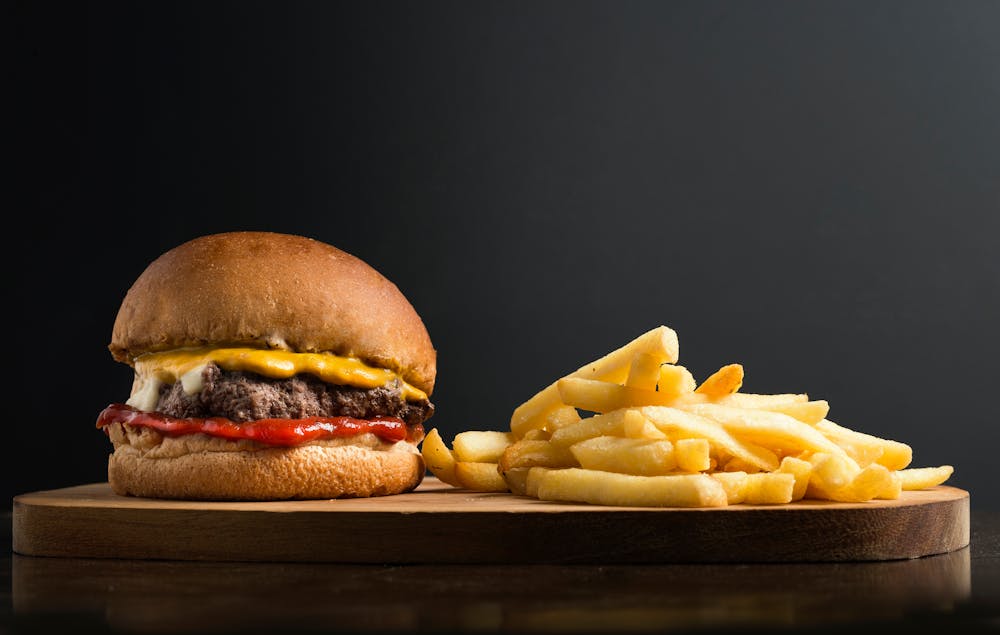Portion distortion is a common challenge in today’s supersized world, and it’s something I’ve personally grappled with on my journey towards healthier eating habits. With oversized portions becoming the norm at restaurants and in packaged foods, it’s easy to lose sight of what a sensible portion actually looks like. However, over time, I’ve developed strategies for navigating portion sizes and practicing mindful eating in a world of super-sized servings.
 One of the first strategies I’ve adopted is to retrain my perception of what constitutes a normal portion size. It’s easy to become accustomed to oversized servings, especially when they’re prevalent in restaurants and fast-food establishments. To combat this, I pay attention to recommended portion sizes and use visual cues to help gauge appropriate servings. For example, a serving of meat should be about the size of a deck of cards, while a serving of pasta is roughly the size of a tennis ball.
One of the first strategies I’ve adopted is to retrain my perception of what constitutes a normal portion size. It’s easy to become accustomed to oversized servings, especially when they’re prevalent in restaurants and fast-food establishments. To combat this, I pay attention to recommended portion sizes and use visual cues to help gauge appropriate servings. For example, a serving of meat should be about the size of a deck of cards, while a serving of pasta is roughly the size of a tennis ball.
 Another helpful strategy for managing portion sizes is to practice mindful eating. Instead of mindlessly devouring large portions, I take the time to savor each bite and pay attention to my body’s hunger and fullness cues. I eat slowly, chew my food thoroughly, and pause between bites to check in with my body and assess whether I’m truly hungry or simply eating out of habit or boredom.
Another helpful strategy for managing portion sizes is to practice mindful eating. Instead of mindlessly devouring large portions, I take the time to savor each bite and pay attention to my body’s hunger and fullness cues. I eat slowly, chew my food thoroughly, and pause between bites to check in with my body and assess whether I’m truly hungry or simply eating out of habit or boredom.
 Meal prepping has also been instrumental in helping me maintain sensible portion sizes throughout the week. By portioning out meals and snacks ahead of time, I can avoid the temptation to overeat or indulge in oversized servings. I use smaller plates and bowls to help control portion sizes, and I aim to fill half of my plate with vegetables, a quarter with lean protein, and a quarter with whole grains or starchy vegetables.
Meal prepping has also been instrumental in helping me maintain sensible portion sizes throughout the week. By portioning out meals and snacks ahead of time, I can avoid the temptation to overeat or indulge in oversized servings. I use smaller plates and bowls to help control portion sizes, and I aim to fill half of my plate with vegetables, a quarter with lean protein, and a quarter with whole grains or starchy vegetables.
 When dining out, I often share entrees with dining companions or ask for a to-go box upfront to portion out half of my meal before I even start eating. This allows me to enjoy restaurant meals without feeling obligated to finish everything on my plate. I also look for restaurants that offer smaller portion sizes or healthier menu options, making it easier to make sensible choices when dining out.
When dining out, I often share entrees with dining companions or ask for a to-go box upfront to portion out half of my meal before I even start eating. This allows me to enjoy restaurant meals without feeling obligated to finish everything on my plate. I also look for restaurants that offer smaller portion sizes or healthier menu options, making it easier to make sensible choices when dining out.
 Reading nutrition labels and paying attention to serving sizes is another important aspect of managing portion distortion. Many packaged foods contain multiple servings per container, so it’s crucial to be mindful of portion sizes and servings per package. I use measuring cups and spoons to portion out servings of cereal, snacks, and other foods to ensure that I’m not inadvertently consuming more than I intend to.
Reading nutrition labels and paying attention to serving sizes is another important aspect of managing portion distortion. Many packaged foods contain multiple servings per container, so it’s crucial to be mindful of portion sizes and servings per package. I use measuring cups and spoons to portion out servings of cereal, snacks, and other foods to ensure that I’m not inadvertently consuming more than I intend to.
 Finally, I remind myself that it’s okay to indulge occasionally and enjoy larger portions of my favorite foods on special occasions. The key is moderation and balance. By practicing portion control and mindful eating most of the time, I can still enjoy occasional treats without derailing my progress towards healthier habits.
Finally, I remind myself that it’s okay to indulge occasionally and enjoy larger portions of my favorite foods on special occasions. The key is moderation and balance. By practicing portion control and mindful eating most of the time, I can still enjoy occasional treats without derailing my progress towards healthier habits.
 In conclusion, managing portion distortion requires mindfulness, awareness, and practice. By retraining our perception of portion sizes, practicing mindful eating, meal prepping, sharing meals when dining out, reading nutrition labels, and allowing for occasional indulgences, we can navigate the supersized world we live in and make sensible choices that support our health and well-being in the long run.
In conclusion, managing portion distortion requires mindfulness, awareness, and practice. By retraining our perception of portion sizes, practicing mindful eating, meal prepping, sharing meals when dining out, reading nutrition labels, and allowing for occasional indulgences, we can navigate the supersized world we live in and make sensible choices that support our health and well-being in the long run.
